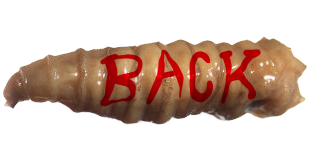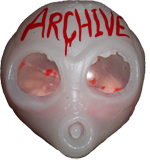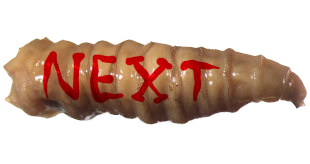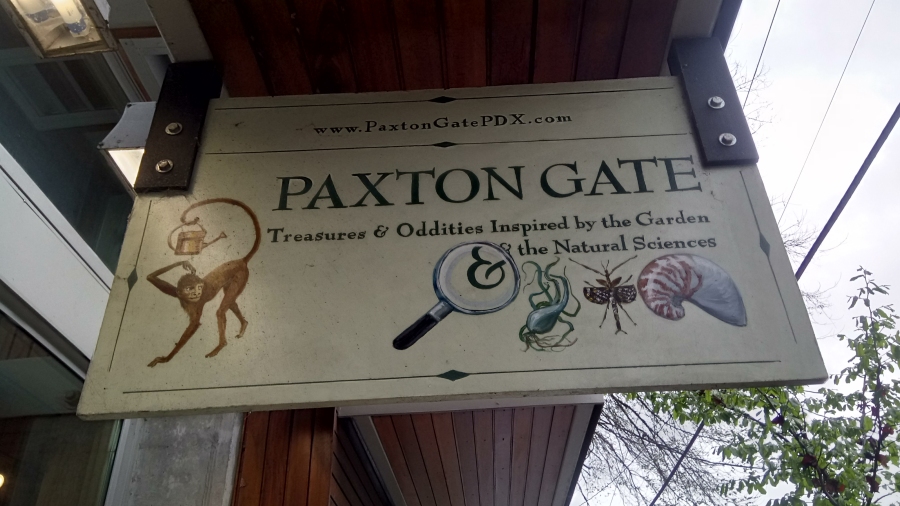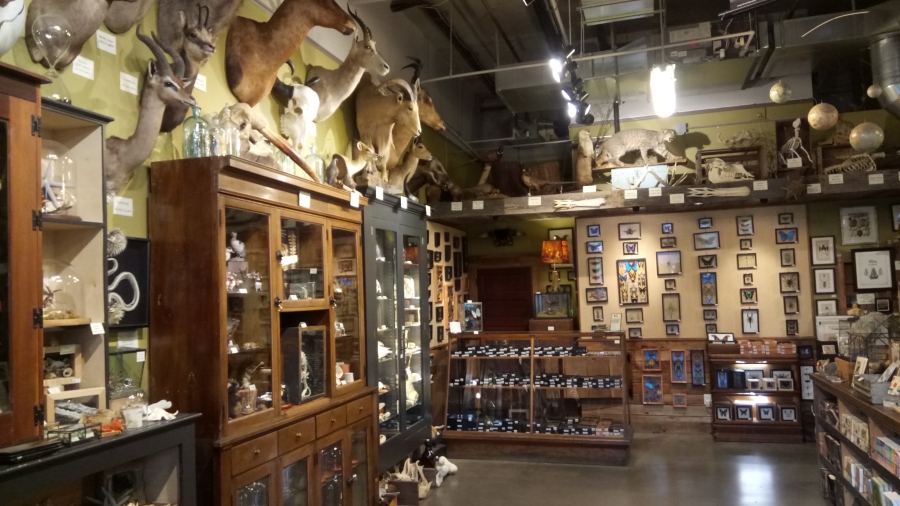Halfway to Halloween:
Things from Paxton Gate
Written by Jonathan Wojcik
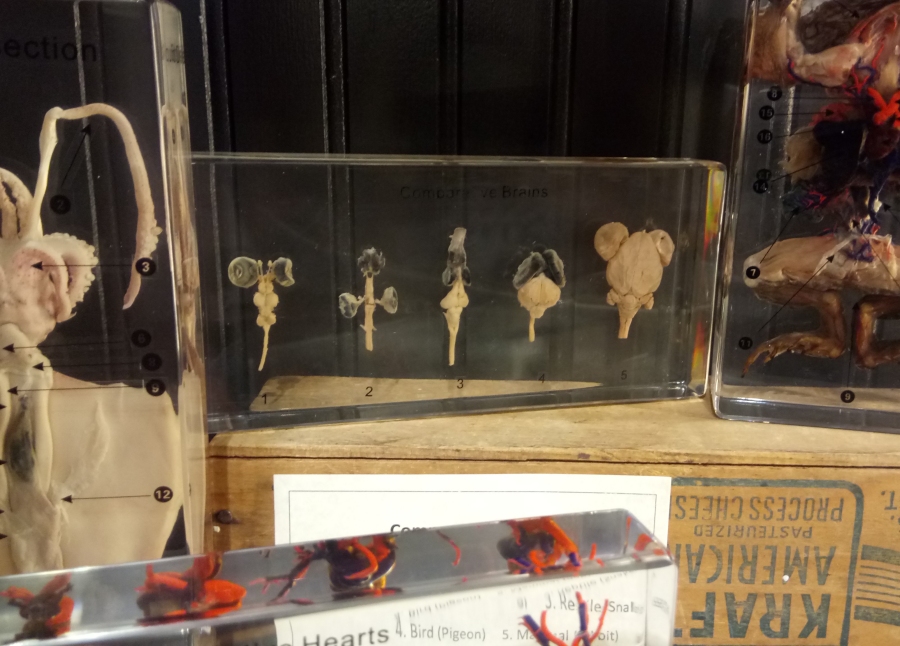
Comparative Brains
See, Paxton Gate specializes in "natural curios" and "scientific novelties," the vast majority of which used to be living things, but don't worry; few things are killed just to be displayed or sold at Paxton. It's up to individual contributors to worry about that, but most of the specimens are existing collections, museum excess, pet and food industry waste or other specimens that might have gathered dust or gone to a landfill. Paxton Gate is like a foster home for dead things.
For example, just look at the tiny, ridiculous brains of these big dummies! They used to be a carp, a frog, a snake, a pigeon and a rabbit, and I'm especially glad that brain specimens like these usually include the eyeballs. The same case features a comparative heart collection, but hearts don't have eyeballs, so they might look cool and I would also accept them, but they don't have as much character.
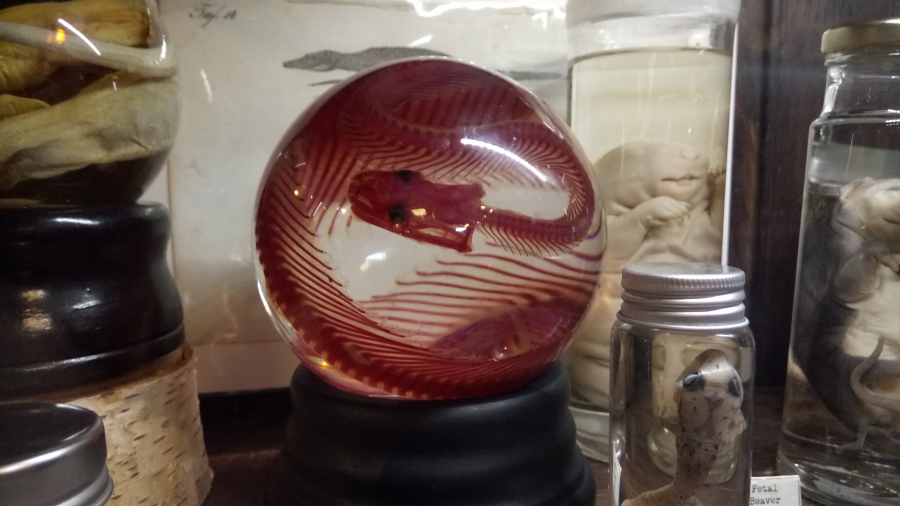
Diaphonized Specimens
You've probably all seen these. Maybe you've even seen a few diaphonized frogs or baby mice for sale as cheap novelties or souvenirs, so you're not impressed by this snake whose soft tissues were only converted to a state of total transparency, your highness.
This process actually takes months to complete, soaking the specimen in a digestive enzyme that clears away the lipid content of the tissues. That's right - it's only your lipids that keep everyone from seeing your bones. Stupid lipids! We could all look this gorgeous if we didn't have to lug those freeloaders around!
Diaphonization was a process originally developed so that the interior structure of an animal could be studied scientifically, but digital scanning has rendered the procedure obsolete. It now exists kind of exclusively as an "art form," and yes, some operations have got it down to mass production. Yes, you can buy things like this as keychains now. Whatever. I'M still impressed by them.
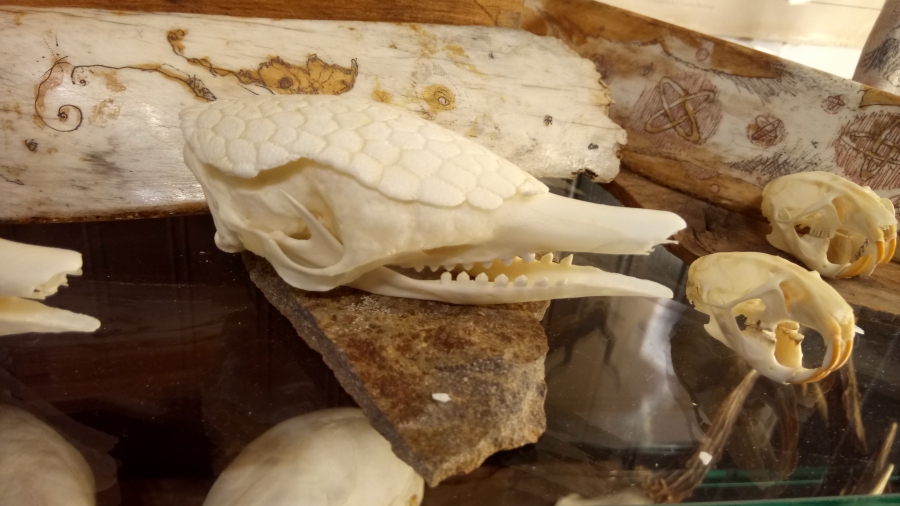
All Manner of Skulls
The skull selection at Paxton is through the roof, and includes such interesting craniums as this armadillo. They've got skulls as massive as walruses, oxes and giraffes, if you're looking for something bigger, but it's the littler mammals and reptiles that I think carry the most charm. You might also notice the beautiful artwork behind the armadillo, which we'll talk about in a bit.
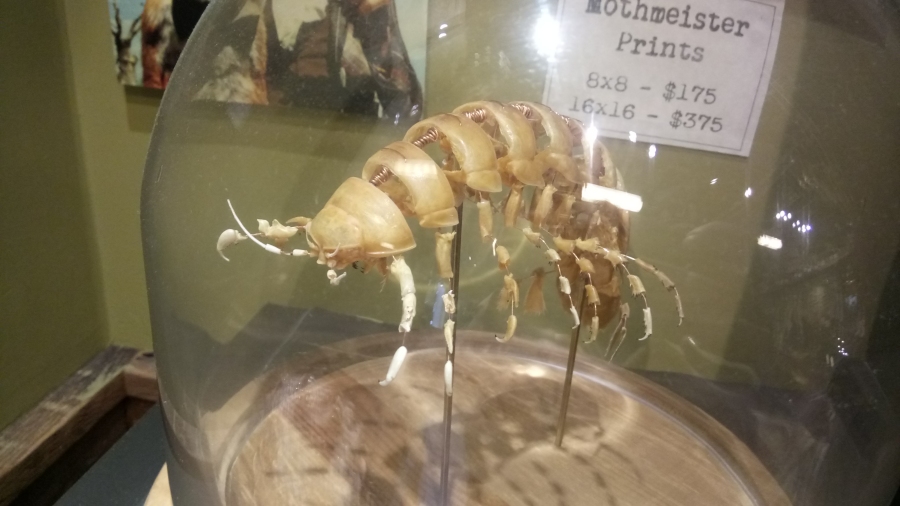
Articulated Deep-Sea Isopod
There are several arthropod specimens arranged this way, but this one comes straight from the whalefalls of the abyss, and isin fact one of the deepest-dwelling animals I have ever seen in person either living or dead! The work that went into separating the delicate pieces of this exoskeleton is truly amazing, and coupled with the animal's origins, explains its nearly $1,000 price.
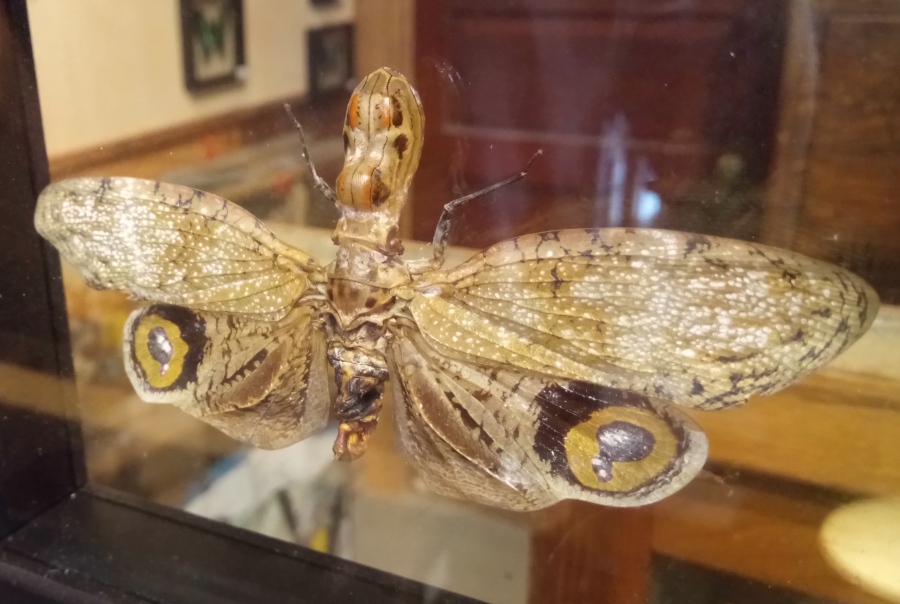
Mounted Insects
Paxton Gate has almost an entire wall and countertop devoted to insects, arachnids and crustaceans preserved the simple old fashioned way, like this gorgeous "peanut bug" or "crocodile lantern fly," but that's not all - they also host regular insect-mounting workshops! There's an entry free that can be up to sixty bucks a person, but that pays for the educational experience and for the specimen you get to take home yourself.
This also includes a "franken-bug" workshop every now and then, in which you get to sift through broken pieces of other arthropoda and salvage them into whatever hybrid creation you can come up with.
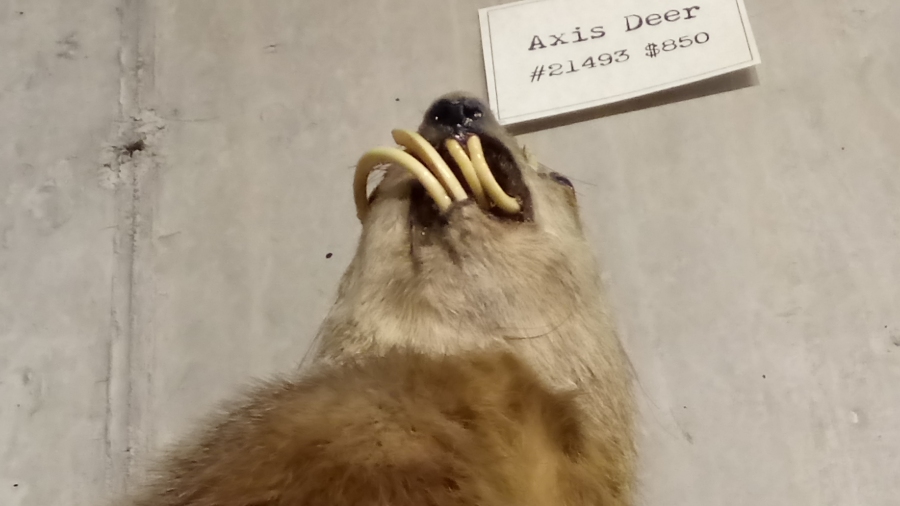
An Unfortunate Woodchuck
You probably know that if a rodent doesn't keep gnawing its own teeth down, they just keep growing and growing until they're too malformed for the animal to eat...or they even penetrate its brain and kill it.
I don't know how this one survived long enough to get quite this bad, but it was apparently found already dead like this, just in time to preserve it for everyone to point and laugh at for centuries to come, a stern warning every mom woodchuck might show their baby woodchucks.
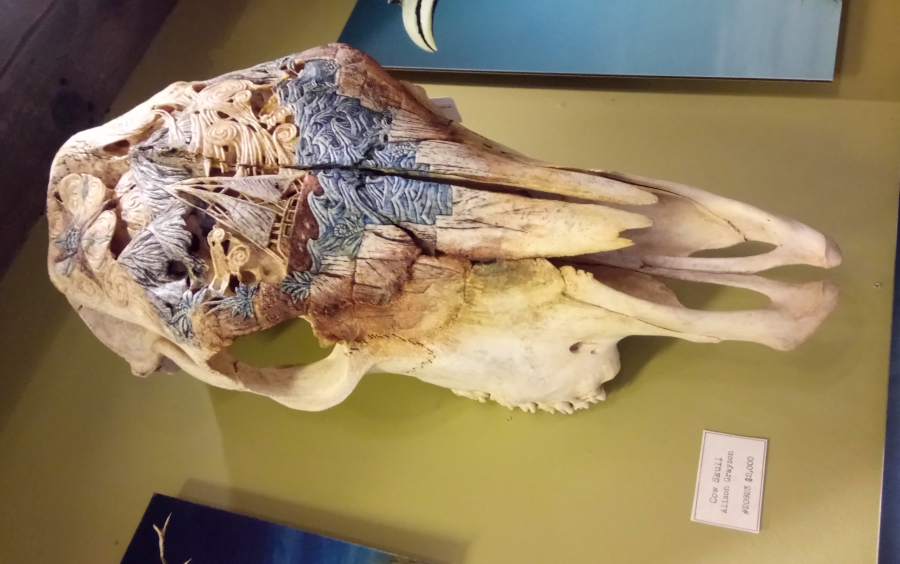
Carved Cow Skull
This is a real cow skull modified by local Portland artist Alison Grayson, who manages to carve complex, three-dimensional images into thin walls of bone. More shockingly, she's only been doing this since 2016, and this one has been on display since at least 2017. Does this look like a skill someone developed over the course of only a year, to you??
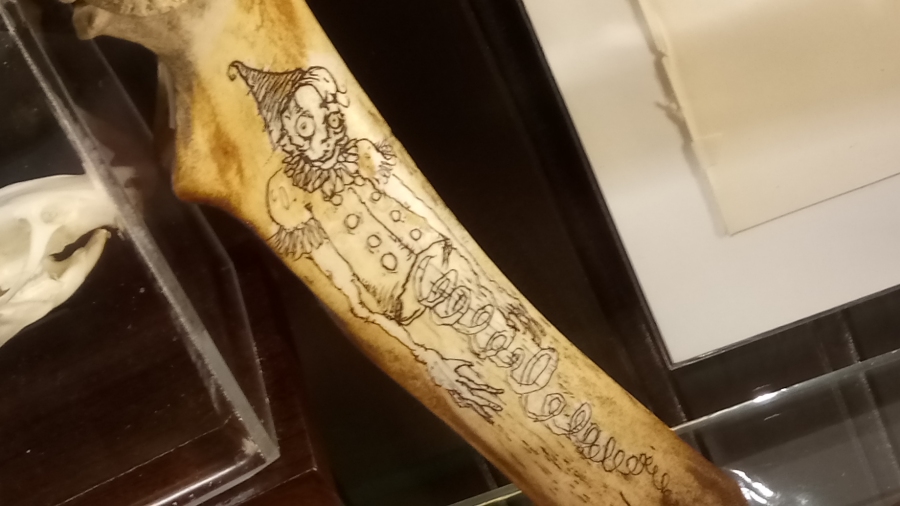
Scrimshawed Bones
There's quite a few of these at Paxton, but my favorite is this creepy jack-in-the-box. I forget what kind of bone he's etched into, or from what, but a lot of these are done on rib bones and jaw bones. I also didn't get the artist's name, so, I'm sorry if you're reading this and this is your uncredited clown bone.
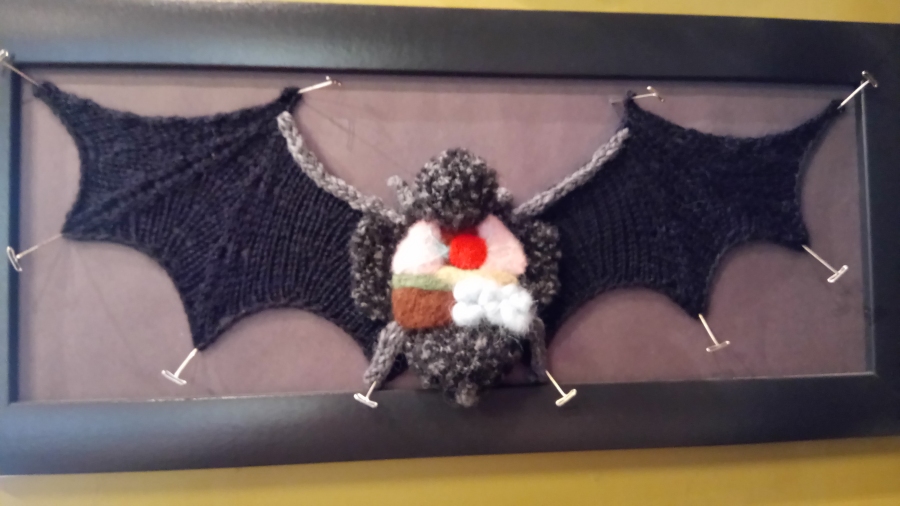
Knitted Bat Dissection
There are many different knitted dissections on offer, including a frog, a pig fetus and even an alien, but I personally think the bat is the coolest. They jokingly call this a "vegan" dissected specimen, which I guess isn't really wrong.
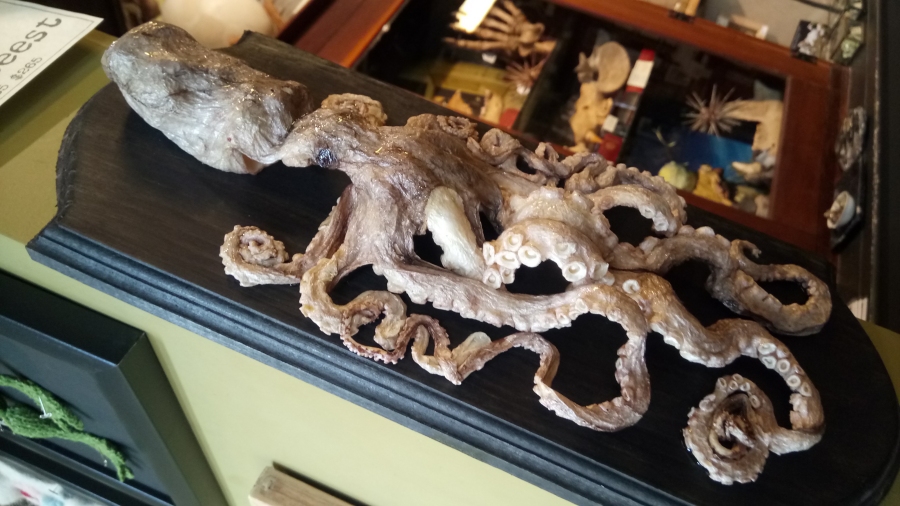
Plasticized Octopus
At least, I think it was plasticized. Maybe it was just dried, but I think that would have resulted in a much more shrunken, blackened cephalopod. It never really crossed my mind that you could preserve such a mushy animal so solidly in three dimensions. Just an octopus on a frame! How perfect is that!?
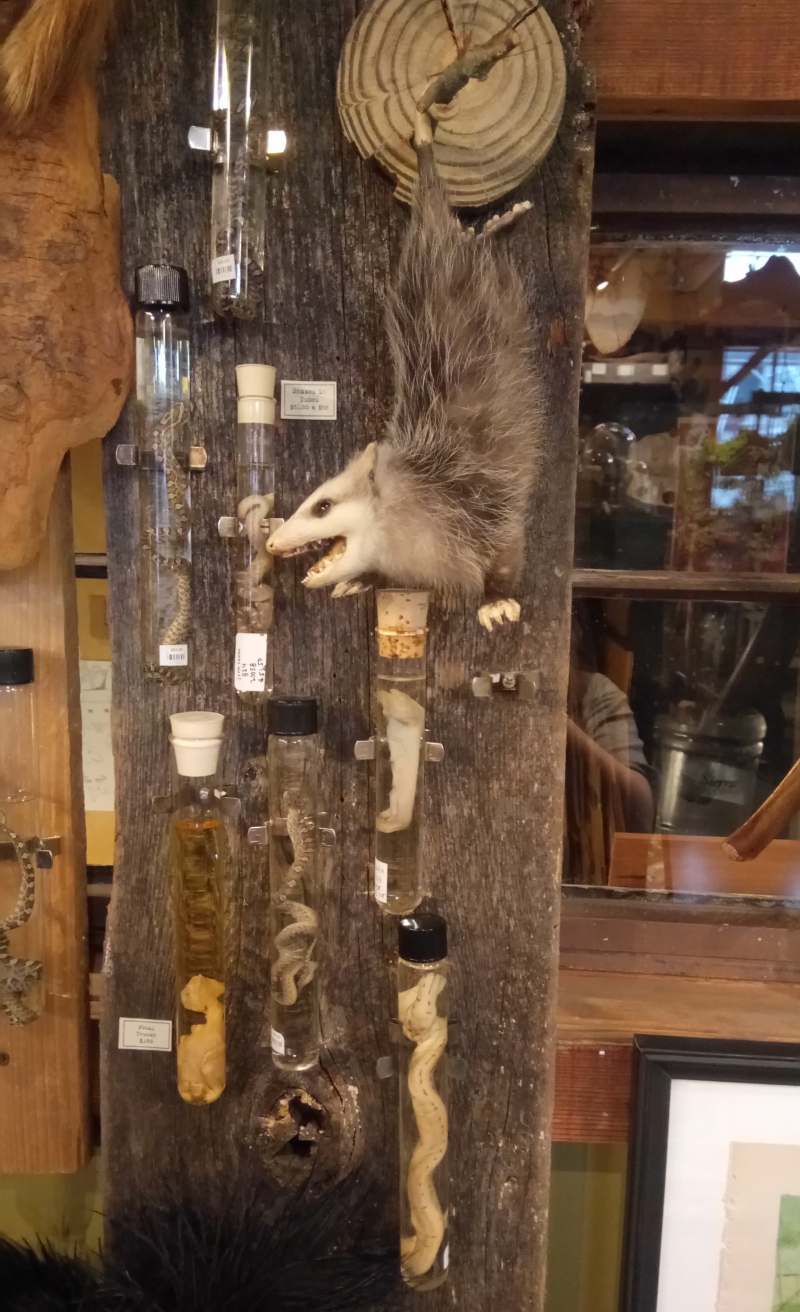
This entire display
Each of these test tube specimens, and the opossum, are for sale individually...but how could you bear to separate such a beautiful collection? The way all this dead stuff is just mounted to a big, weathered wooden board is simply too gorgeous.
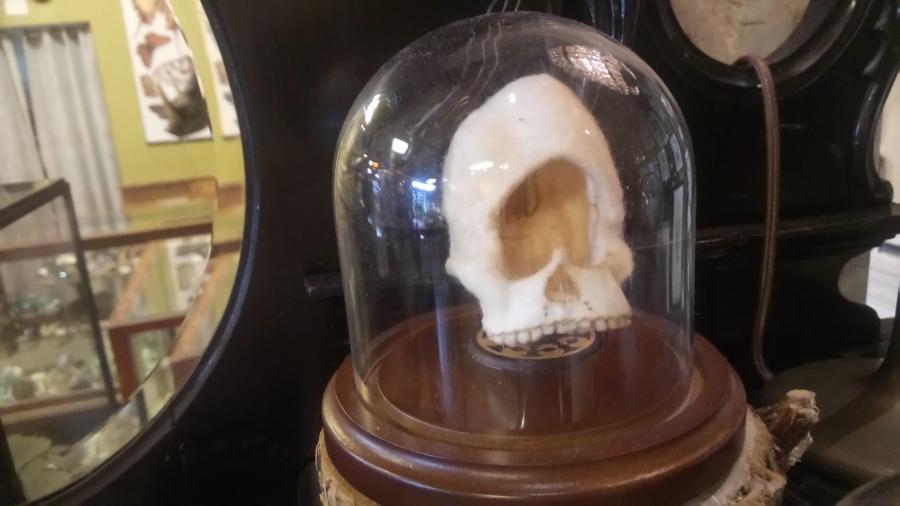
Felted Cyclops Skull
Yeah, I said felted. At a distance, it looks almost like real bone, but it's made of 100% felt all the way through, so I guess this is another "vegan" item.
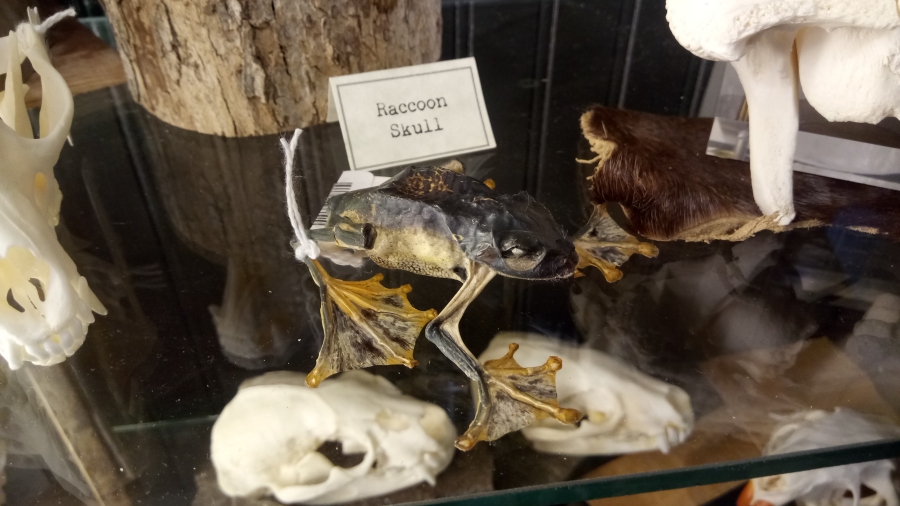
Flying Frogs
There's around a dozen of these mummified frogs around the store, and I believe they're all Rhacophorus nigropalmatus, or Wallaxe's flying frog. Those oversized webbed feet allow these frogs to glide through the air for up to fifteen meters, allowing them to super-jump between trees or escape predators from heights that would splatter a lesser amphibian. This is another animal I'd never seen before, living or otherwise.
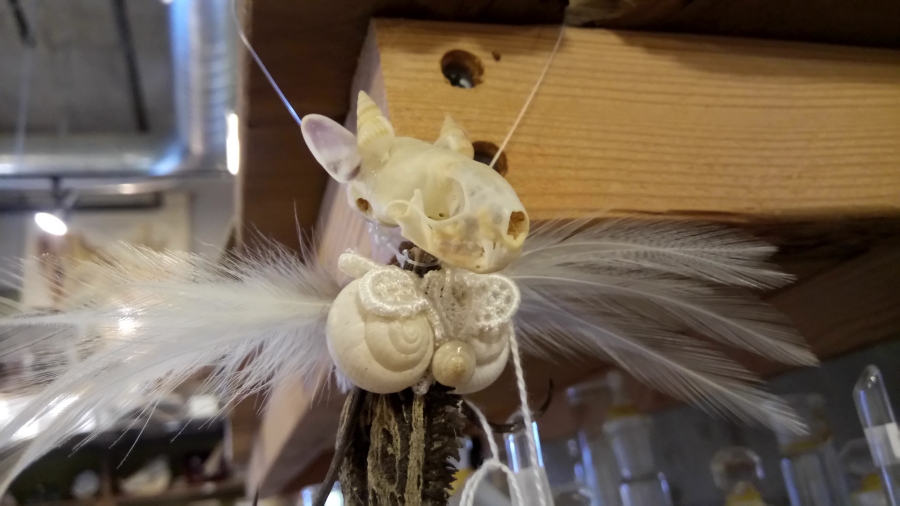
A Fairy
What kind of skull is that anyway? A weasel? I think it might be a weasel. It sure was tiny. The body was a little nondescript and I'm not sure what it was made of, either, but it's feathers for wings as well as ears, horns and even what appear to be oversized breasts made from mollusk shells. I'm liking everything about that, personally. This is a great interpretation of what a fairy might be. Not necessarily a dead fairy, mind you. I'd rather think they look like this alive, too. Maybe it's when they die that they get flesh on them and start to look like little people.
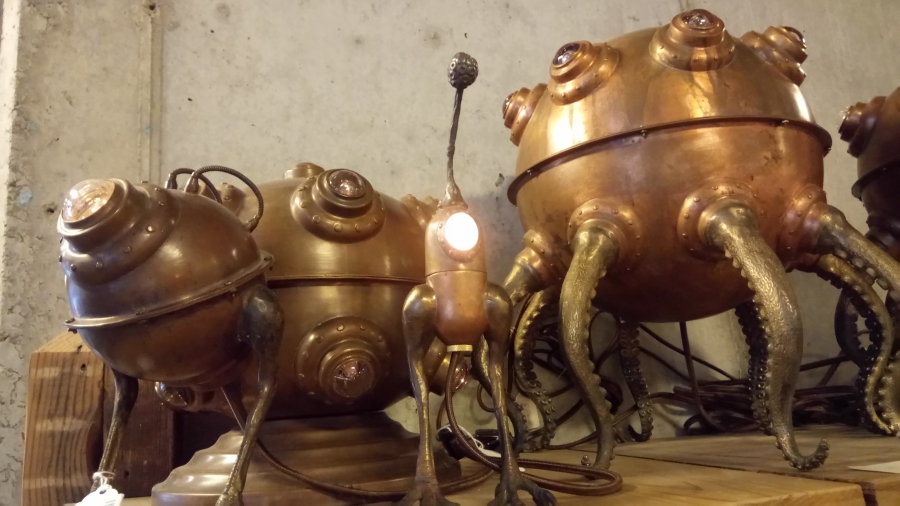
Lamp Creatures
By artist Evan Chambers, this is something that was neither previously alive nor crafted in the image of anything alive, but far too cool not to include. These bronzed entities come in myriad shapes and sizes with bird-like legs or even suckered tentacles, resembling the deep-sea diving suits of creatures not at all shaped like us, and my favorite by far is the little one lit up in the center here, with the organic stalk on top.
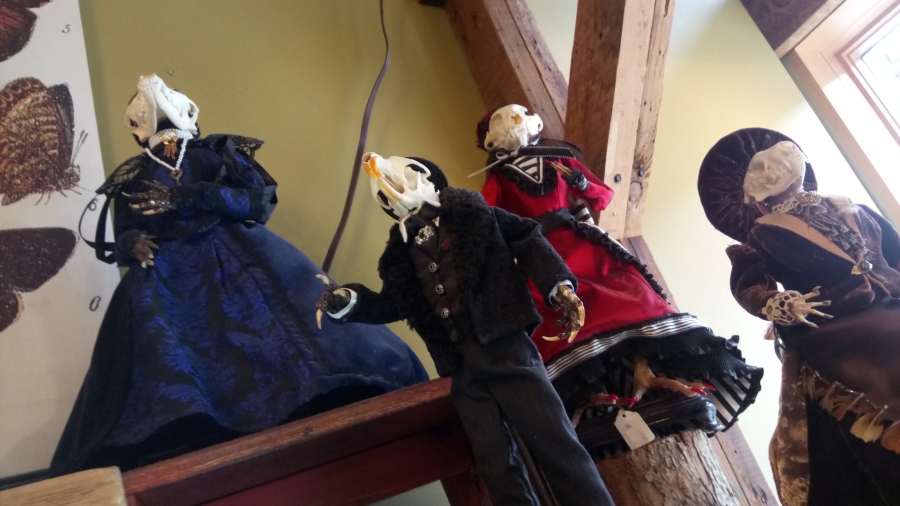
Animal Liches
Really, what else would these be? If your head is a skull and you dress like you're going to a dinner party for royalty, you're probably an amoral sorcerer who used necromancy to extend your own life, and who's to say that's not a practice among anthropomorphic foxes and beavers, too??
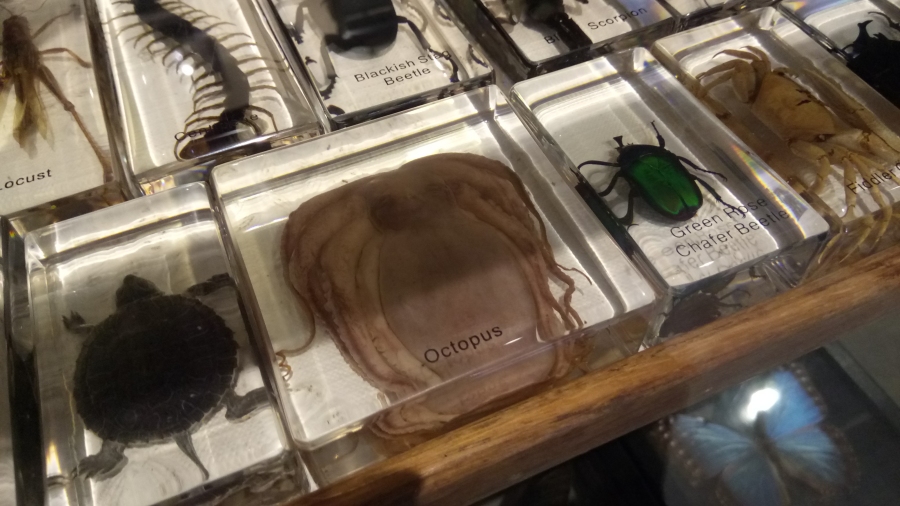
Resin Specimens
The rest are all interesting, to be sure, but here we have another way in which I never saw an octopus preserved. Such a perfect little puddle of cephalopod, locked in a block! It's simple and lovely!
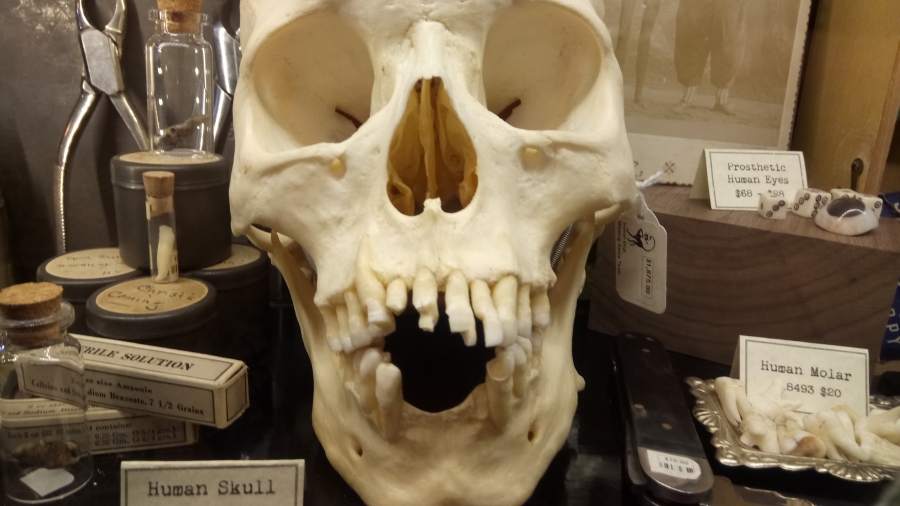
Actual Human Skull
I think this might be the only human skull at Paxton Gate, and I'll be sad if someone finally spends $1,875 to take it home with them. I'd miss this skull's hilariously shocked expression, the result of unbelievably screwed-up teeth, that has felt to me like such a fixture of Paxton Gate since my first visit.
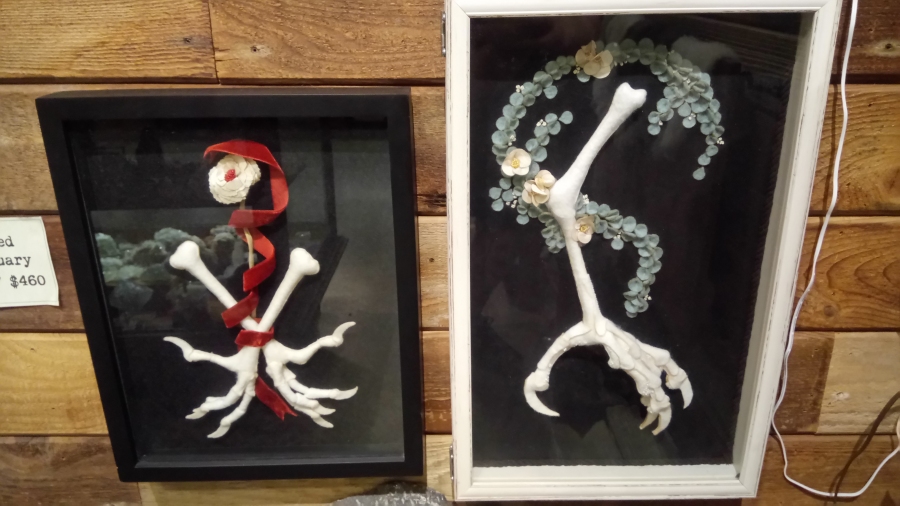
Felted Bird Talons
This is another all-felt item, and the detail is even more incredible than the cyclops skull. Every scale on every toe is represented, and it's hard to pick which of these two frames displays is the cooler one. There are strong merits to both the symmetrical pair of talons and the single, larger leg framed by delicate, fabric flowers. This is the kind of thing a Satanic grandma has hanging in her living room.
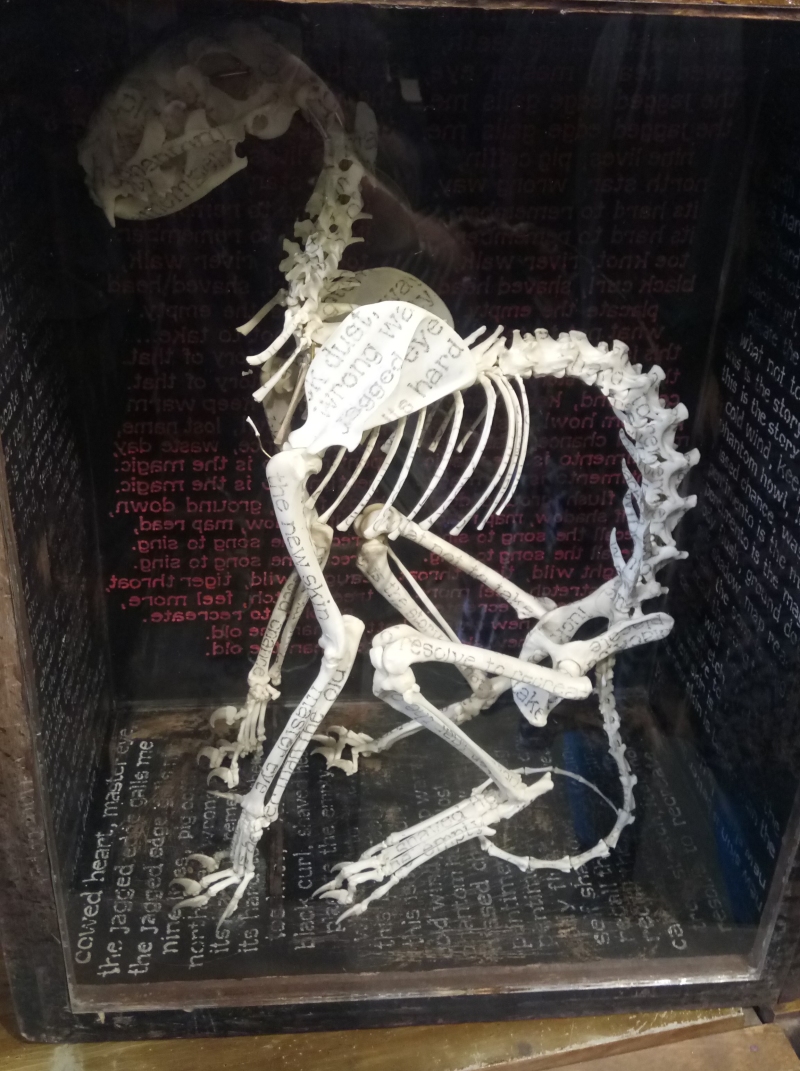
Cursed Skeleton Cat
What's that written on this cat's bones? The rest is written on every wall of this old wooden box, and I feel like this entire piece has got to be the single gothest thing you've seen all day.
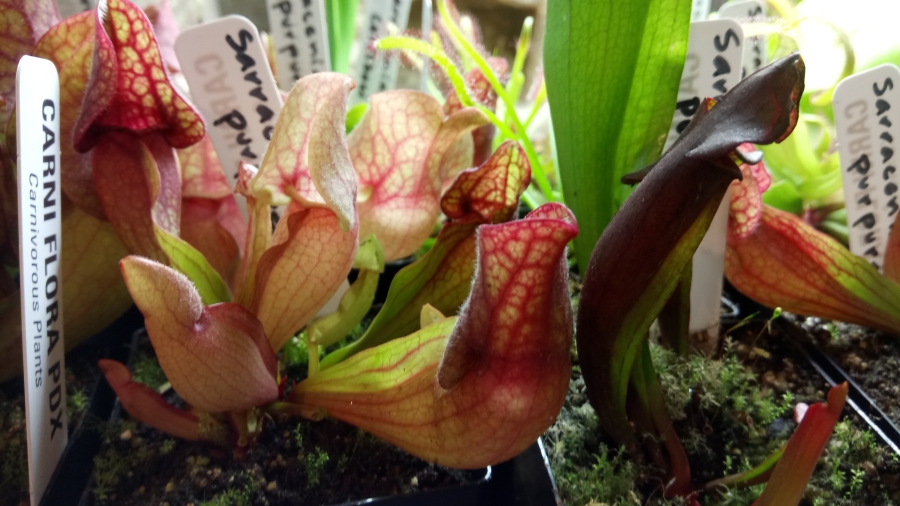
Carnivorous Plants
These certainly aren't unique to Paxton Gate, obviously. Heck, you can buy carnivorous plants from a nursery on the very same street, but I just want to say how thrilled I am that I now live in one of the only parts of North America where you can easily grow non-tropical carnivorous plants - such as sarracenia pitchers and fly traps - right outdoors on your porch all year round. I can't tell you how hard I tried to take care of them indoors in the past, and could never get the hang of overwintering them in a refrigerator. That's just too much work! Now I can buy a flesh-eating botanical monster like this, put it in a tub of wet peat and just leave it in the sun through every season of the year. I can't believe I didn't know how much I'd love living in the Northwest for so much of my life.
The only downsides out here? They don't have bagworms, they barely have cicadas, and they don't have luminous fireflies.
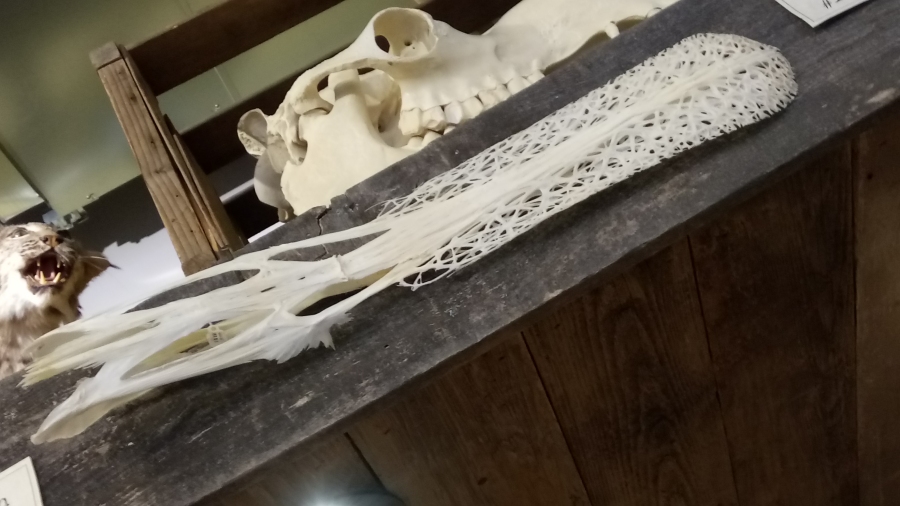
Paddlefish Skulls
There's a couple of these up, and of all the larger animal skulls, I think this would be the finest choice. You have to love a skull that would make the average person ask "what the hell is that?"
Then you can tell them all about how this is one of the largest, most ancient bony fish in North America, actually native to the Mississippi river. That bill is covered in thousands of electroreceptors the animal uses to detect swarms of zooplankton it feeds upon in a similar manner to a whale. Only one other species of paddlefish exists today, all the way over in China, but the group was once found nearly world-wide.
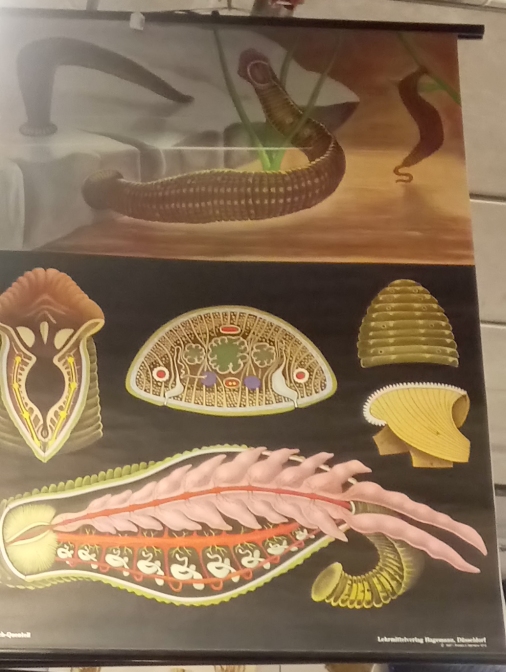
Leech Anatomy Chart
This is obviously something that belongs in my home, but unfortunately, it's not one of the store's poster prints you can buy for just $15-20. No, this is "one of the originals" of this chart, for several hundred dollars. Other charts include earthworm anatomy and protozoa, both of which are also overdue for a run of print reproductions, I'd say.
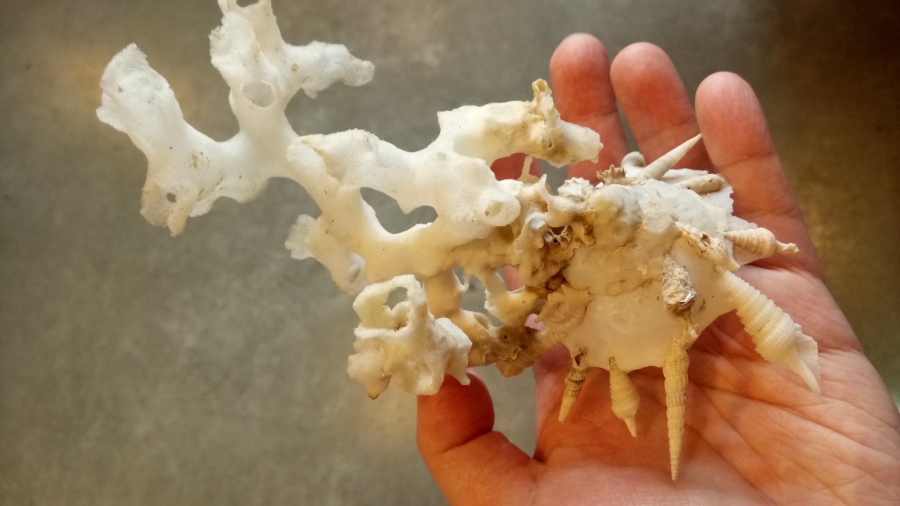
Carrier Shell
It looks a lot like some doofus just glued a bunch of crap onto this seashell for fun, but that doofus was in fact the shell's original owner, a snail of the family Xenophoridae, which means "bearing foreigners." As its shell grows, it selects the thin, pointed shells of other sea snails and secretes a special slime that permanently cements them in place, along the rim of its own home. This strategy allows the snail to arm itself with "spines" free of charge, without having to expend its own valuable nutrients to grow them.
EVERY carrier shell at Paxton gate also includes a large, branching glass sponge on top, which seems quite common for this species. I wonder just how reliably they'll add the sponge when they come across one, and I wonder if there's any particular stage in their growth that they're more likely to do it? I'd also love to really see what this whole mess looks like crawling around on the sea floor.
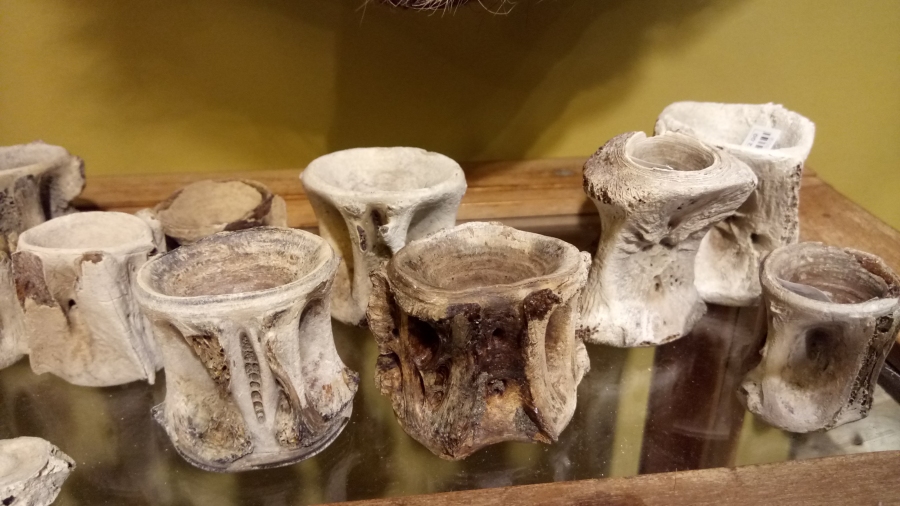
A Bunch of Vertebrae
I don't know whose vertebrae these were, but I really like the look of them all sitting together like a bunch of bizarre tree stumps. I can't even pick a favorite. I'd want them all.
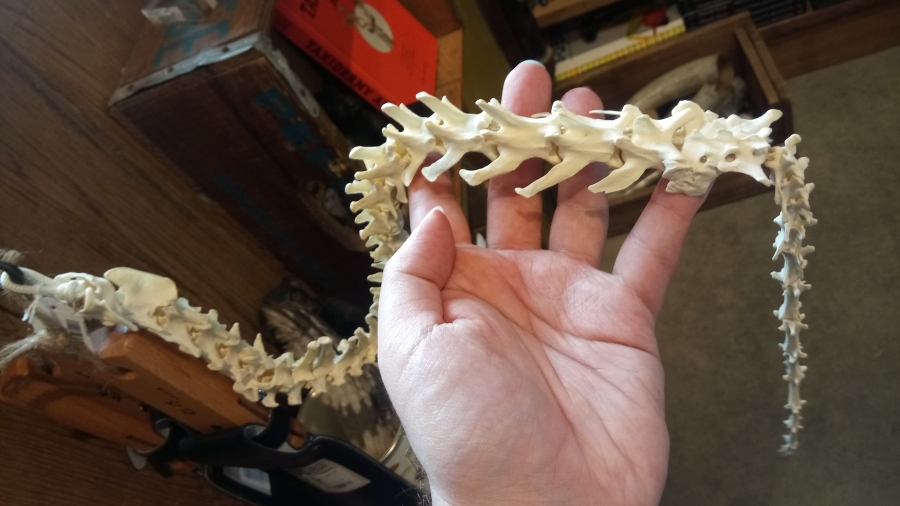
Articulated Fox Spine
If you have difficulty picturing how a Dullahan is supposed to wield a spinal column as a whip, and I'm sure you've spent a lot of time pondering that question, it's probably because the Dullahan's spine whip is artificially articulated, like this. It's basically just a cord "beaded" with a fox's entire backbone in order, so it's not that complicated, really, but it looks amazing and it's a whole lot of fun to handle.
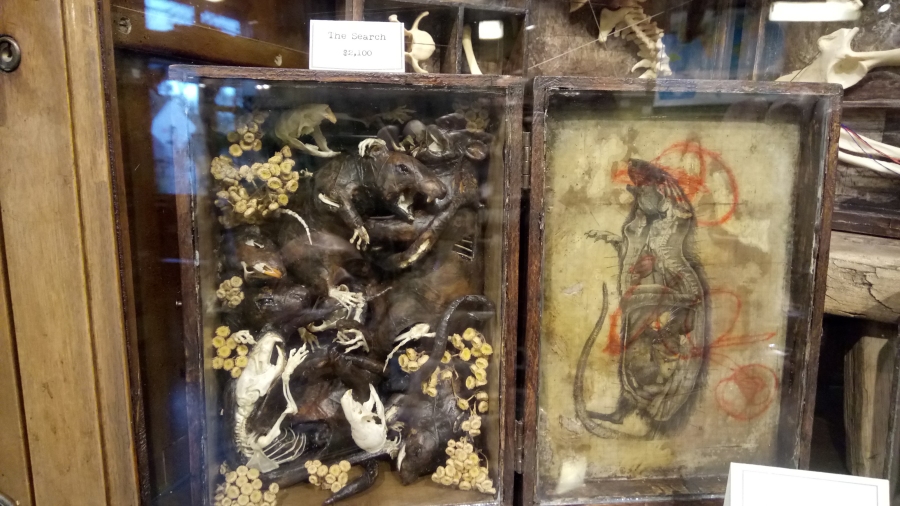
"The Search"
What are they searching for?? This is just a whole case of rats. Skeleton rats, half-skeleton rats and non-skeleton rats scrabbling around in a box with rat anatomy printed on the inner lid. Honestly a pretty stunning art piece in person, even if it doesn't photograph too well.
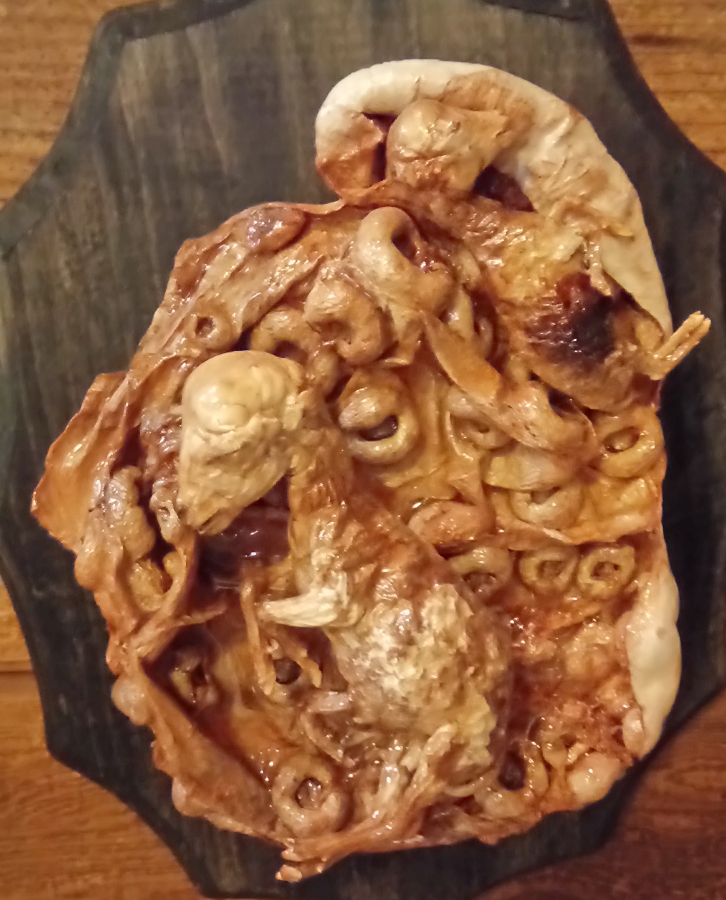
Plasticized Lamb Fetuses
Not just the lamb fetuses, either, but the entire placenta and womb lining! You'll notice at least two lambs here, one larger than the other, possibly because it got greedier with nutrients. Thought you'd get one up on your sister, did you? Thought you'd be born stronger and more dominant and keep on hogging all the food? Was that your plan? How's that working out for you now, idiot????
MORE HALLOWEEN FEATURES:
